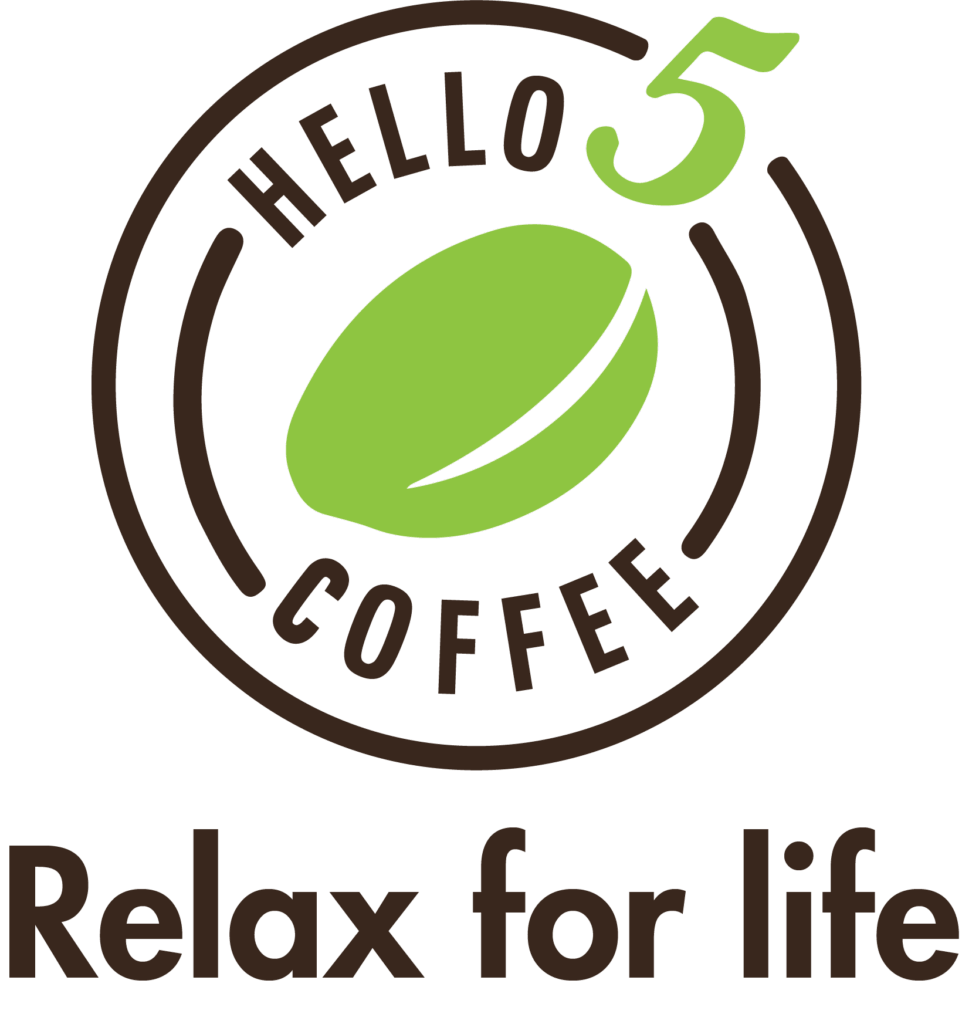Vietnam is the world’s second-largest coffee producer, but finding the right beans can be overwhelming for first-time buyers. If you’re asking yourself where to buy Vietnamese coffee, this article is for you.
History of Vietnamese coffee
Coffee appeared in Vietnam in the mid-19th century when the French brought the first seedlings to the fertile red basalt land. Initially, coffee was grown mainly to serve the nobility and upper class French living in Indochina. But just a few decades later, coffee beans had taken root in the soil, climate, and rhythm of Vietnamese life.
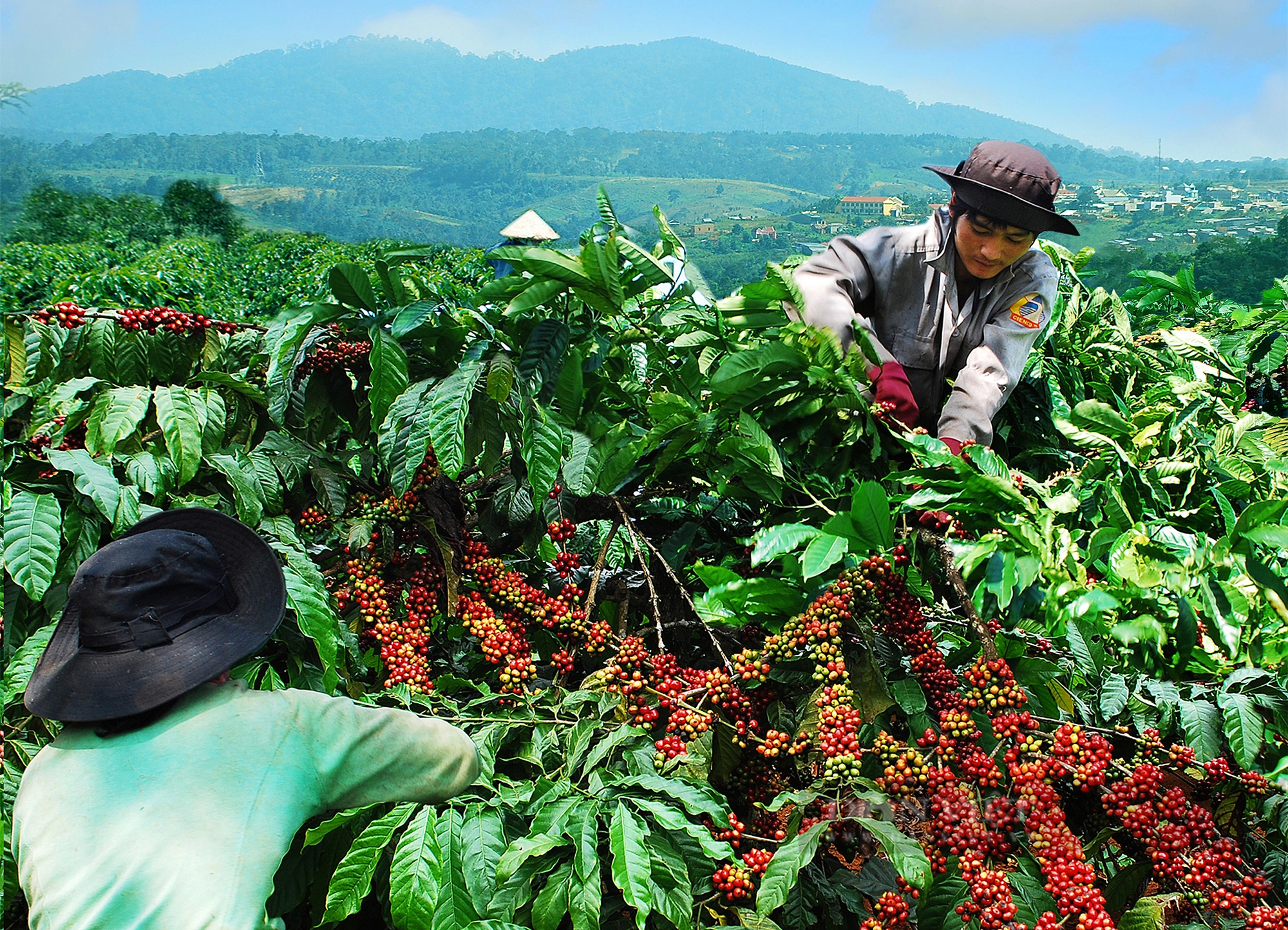
Particularly, the Central Highlands with its vast plateaus, fertile red basalt soil and cool climate became the coffee capital. From there, coffee was not only an export crop, but also gradually became part of the people’s enjoyment culture, with images of sidewalk coffee shops, phin coffee cups, and the habit of sitting and sipping throughout the morning or afternoon.
Today, Vietnam ranks second in the world in coffee production, only after Brazil, with output accounting for more than 18% globally. What makes Vietnamese coffee strong is not only in quantity, but also in the diversity and unique flavors that have shaped the Vietnamese coffee brand on the world map.
What makes Vietnamese coffee special
The first thing that makes Vietnamese coffee different is the Robusta variety, which accounts for up to 95% of the cultivation area. If Arabica is considered the “star” of world coffee with its bright acidity and fruity aroma, Vietnamese Robusta makes a strong impression with its boldness, characteristic bitterness, and high caffeine content.
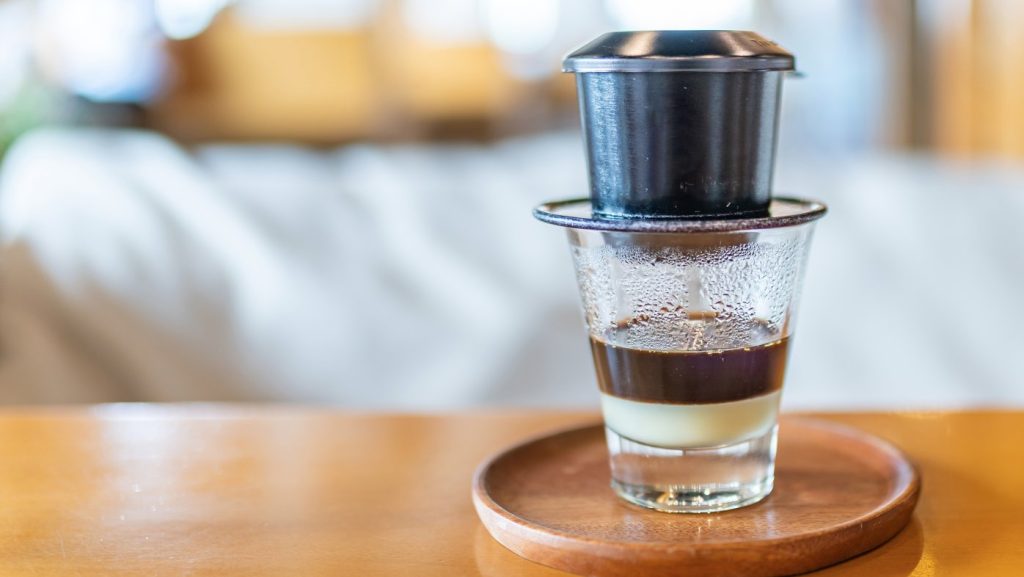
The brewing method also creates uniqueness. Vietnam’s drip phin makes the enjoyment process slow, each drop of coffee falling is a moment of silence. Hanoi people are attached to rich egg coffee, Saigon people love cool iced milk coffee, and in Hue, you will find cups of salty coffee.
Vietnamese coffee doesn’t try to imitate any country. It maintains its strong identity, not sweet and elaborate like Italy, not rustic and simple like Ethiopia. This personality makes many tourists still remember the taste of coffee here long after leaving Vietnam.
Best types of Vietnamese coffee
1. Robusta
Robusta is the soul of Vietnamese coffee. Robusta beans grown in the Central Highlands, especially Buon Ma Thuot, have small size, high caffeine content, bitter taste but thick and lasting aftertaste. The aroma often evokes dark chocolate, roasted chestnuts and sometimes even the smell of earth after rain.
The strength of Vietnamese Robusta is its reasonable price, easy accessibility, and suitability for phin brewing, espresso or as a base for commercial coffee blends. This is the type of coffee that lovers of alertness and strength definitely cannot miss.
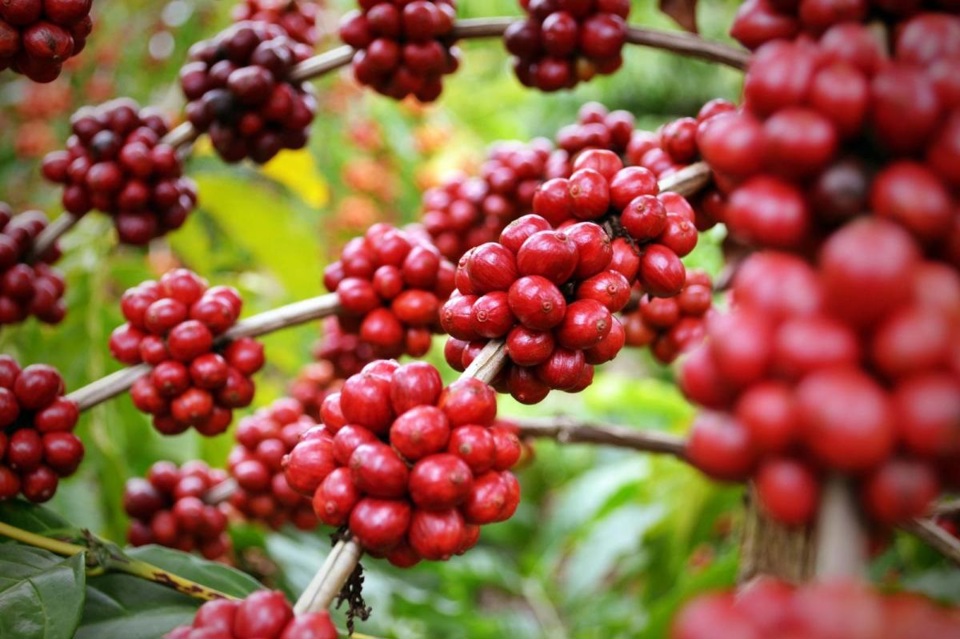
2. Arabica
Vietnamese Arabica, concentrated mainly in Da Lat – Lam Dong, especially in the Cau Dat area, is considered the “precious gem” of the domestic coffee industry. At an altitude of over 1,500m, with cool climate year-round, Arabica beans develop slowly, thus having richer flavors. Cau Dat Arabica is famous for its pure aroma, slight citrus acidity, gentle sweet aftertaste, bringing a more luxurious experience compared to Robusta.
Although Vietnamese Arabica production is not much (only about 4%), quality has been gradually confirmed, especially in international competitions. This is the choice for connoisseurs who want to seek sophistication and gentleness.
Read more: 5 best Vietnamese coffee beans
3. Specialty coffee
Along with the global specialty coffee wave, Vietnam has also developed specialty coffee. Small farms in Lam Dong, Son La, Dak Lak experiment with new processing methods like honey, natural, washed, combined with modern roasting techniques. Coffee beans are not only evaluated by flavor, but also by transparency in the production process and sustainable relationships with farmers.
Vietnamese specialty coffee usually scores above 80 according to SCA standards, opening doors for Vietnamese coffee to reach the most demanding markets.
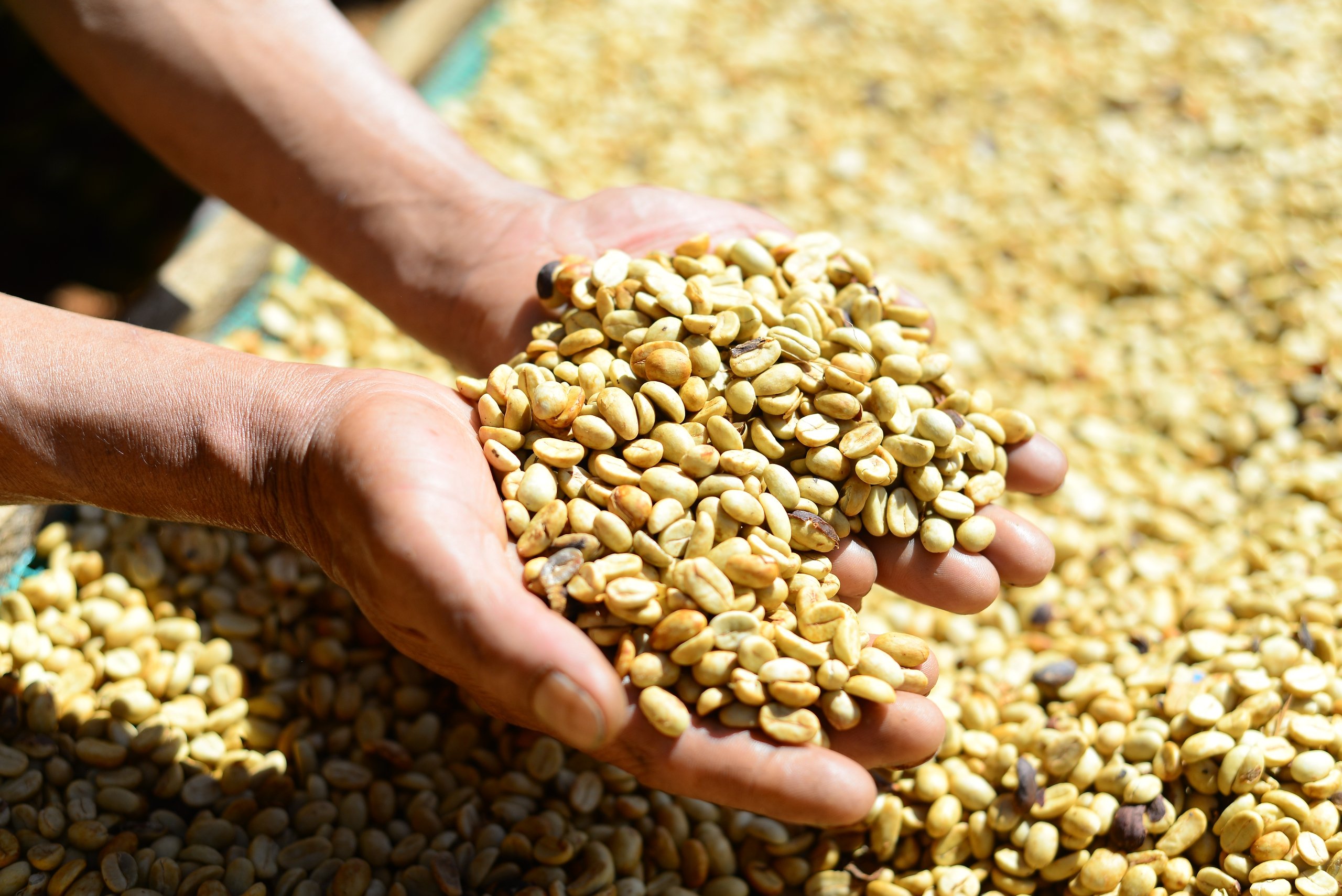
Best coffee growing regions in Vietnam
When talking about Vietnam’s coffee map, we cannot ignore the two largest “capitals”: Cau Dat – Da Lat – Lam Dong and Buon Ma Thuot – Dak Lak. In addition, regions like Gia Lai, Dak Nong, Son La, Quang Tri,… are also quality names.
1. Cau Dat – Da Lat – Lam Dong
Cau Dat is located at an altitude of over 1,500 meters above sea level, with cool climate year-round, mineral-rich red basalt soil. This is considered the “Arabica capital” of Vietnam. Cau Dat Arabica beans have delicate aroma, bright acidity, light sweet aftertaste, often reminiscent of floral, fruity and honey notes. It is precisely this uniqueness that makes Cau Dat Arabica often sought after by international roasters, appearing in many premium specialty coffee lines. Hello 5 Coffee also owns raw material areas here, ensuring supply of premium Arabica with clear traceability.
2. Buon Ma Thuot – Dak Lak
If Cau Dat is famous for Arabica, then Buon Ma Thuot is the “Robusta capital” of the world. This region has sub-equatorial climate, distinct wet-dry seasons, combined with fertile red basalt soil, creating ideal conditions for coffee plants to develop. Buon Ma Thuot Robusta has small beans, high caffeine content, strong bitterness, characteristic chocolate and roasted nut aroma. This is also the region that accounts for most of Vietnam’s coffee export volume, contributing to making the country the world’s leading Robusta supplier. At Hello 5 Coffee, Buon Ma Thuot Robusta is strictly selected, ensuring cleanliness and original flavor, suitable for both traditional phin brewing and modern blending.
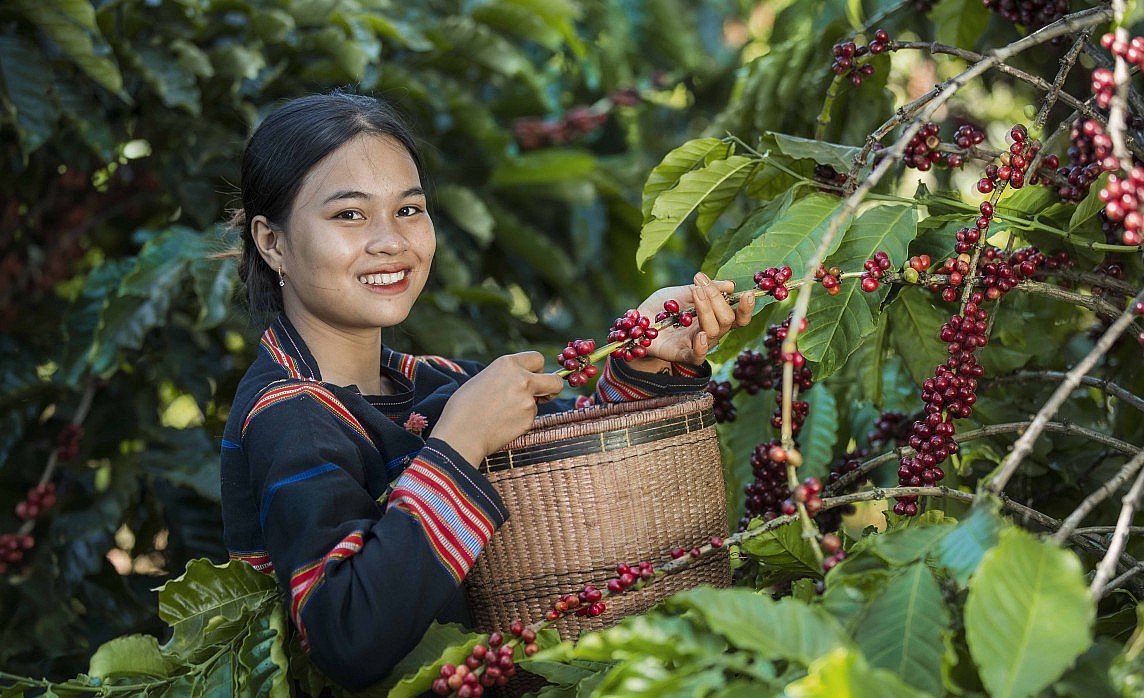
Where to buy coffee in Vietnam
For retail customers
If you are a tourist or coffee lover wanting to buy a few packages for personal enjoyment or as gifts, there are three most popular channels:
1. Traditional markets
Walking through markets in Hanoi, Ho Chi Minh City, or Buon Me Thuot, you’ll find stalls overflowing with coffee beans. The aroma is intoxicating, and bargaining is part of the charm. However, not all beans are pure; many vendors mix corn or soy to increase volume, so this option is best for those who enjoy exploring but don’t prioritize guaranteed quality.
2. Local cafés and roasteries
If you want to explore authentic flavors, you should visit artisan roasting shops. In Ho Chi Minh City there are The Workshop, Shin Coffee; in Hanoi there are Oriberry, Kafeville; in Da Lat there is La Viet. These are places where you can taste, listen to stories from farms, and choose the coffee that best suits your taste.
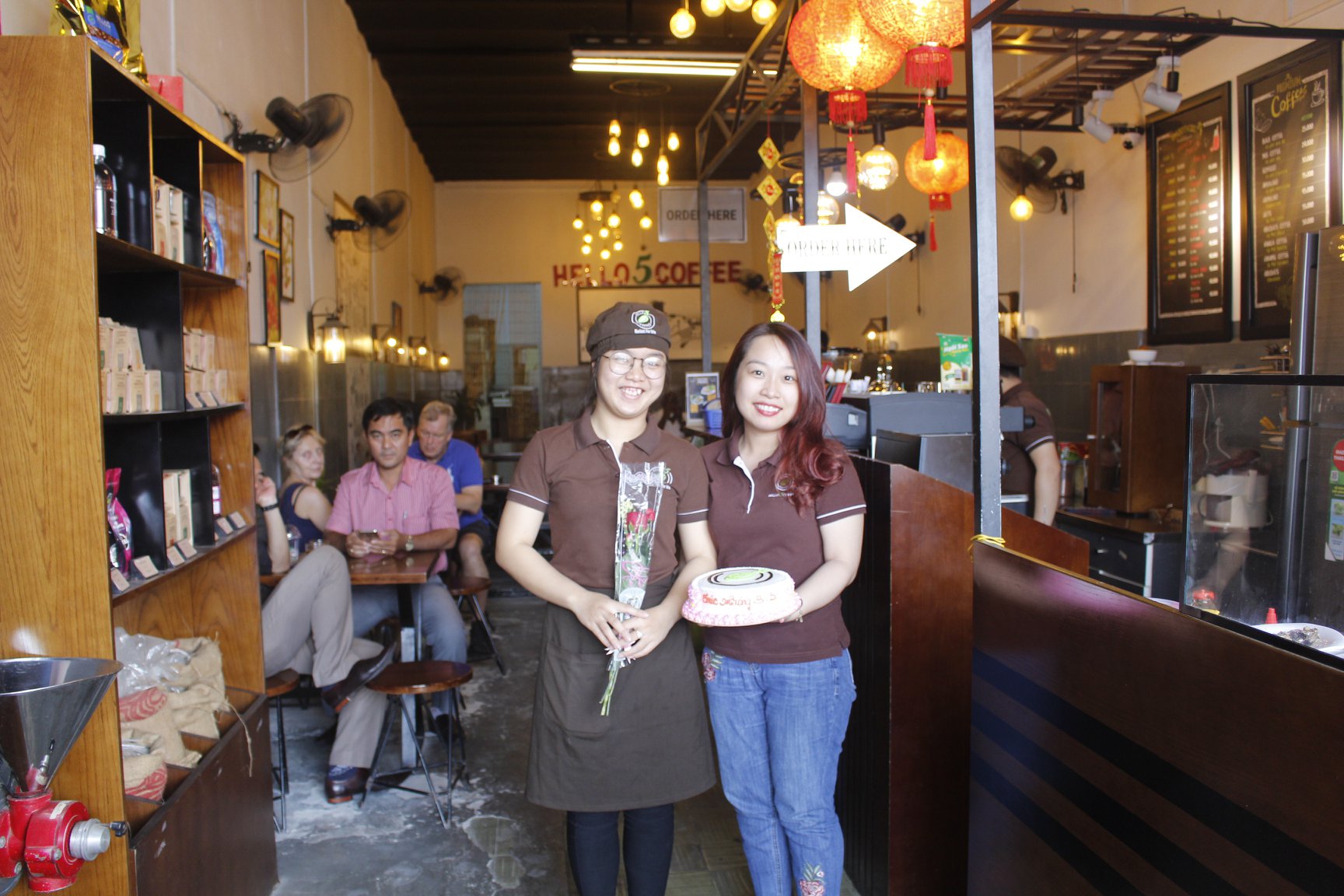
3. Buy at supermarkets and popular brand chains
For tourists who want quick, convenient purchases. Brands like Trung Nguyen, Highlands or G7 are available in most supermarkets. Advantages are easy to find, beautiful packaging; disadvantages are mostly blended coffee, not maintaining purity.
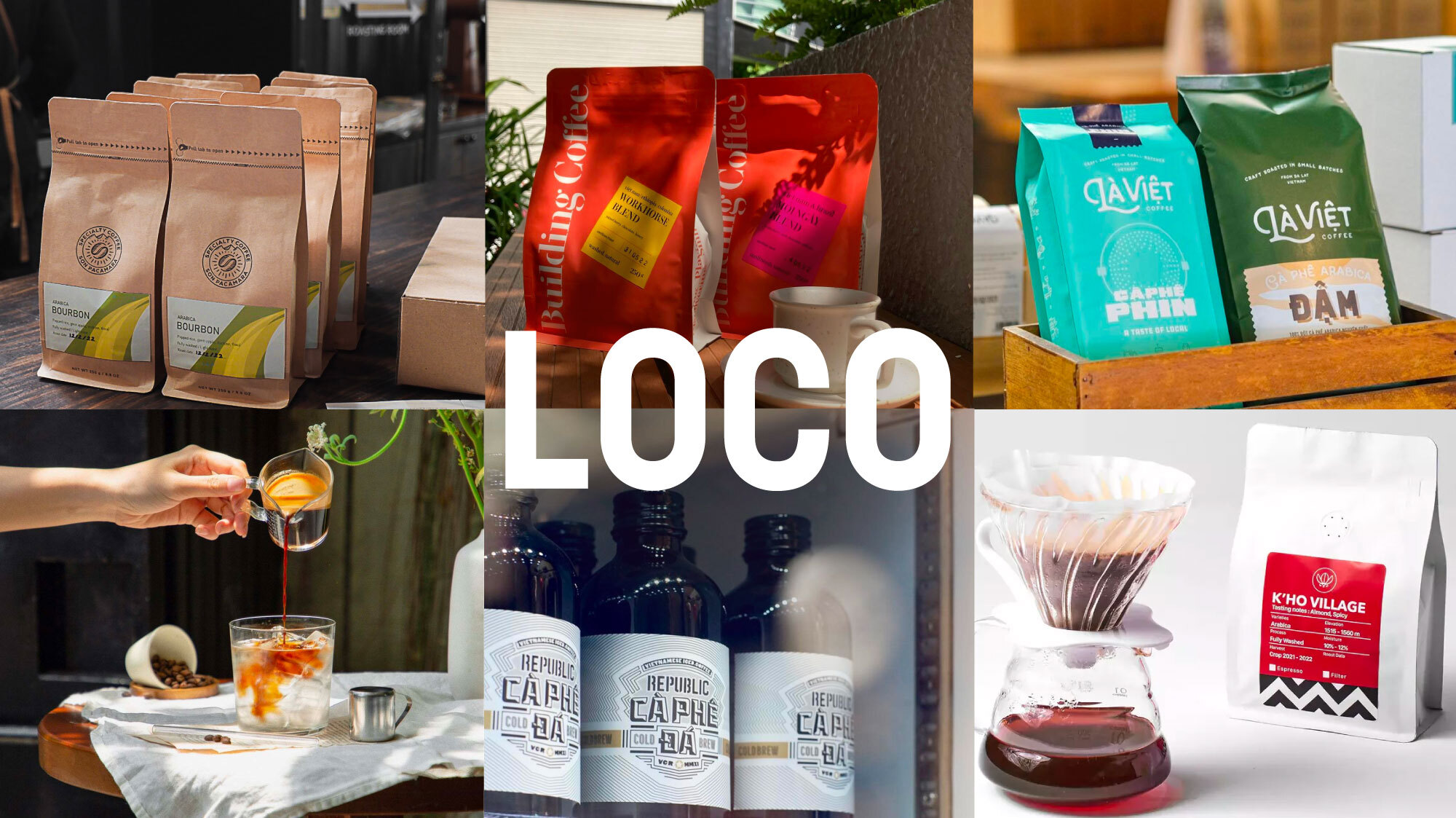
4. Online platforms
On global platforms like Amazon, you will mostly find commercial brands—easy to order, but the coffee often travels long distances before reaching you, which means the freshness is not always guaranteed.
Specialty coffee websites: They curate beans from regions like Cau Dat, Da Lat or Buon Me Thuot, giving you access to rare Arabica and specialty blends. However, prices here are often higher, as you are paying for limited supply and international distribution.
5. Buy directly from reputable pure coffee brands
If you want guaranteed quality, clean coffee without additives, Hello 5 Coffee is a prominent choice. They provide Cau Dat Arabica, Buon Ma Thuot Robusta, unique Culi and various diverse blends. Beans are optimally roasted, modernly packaged, suitable for both daily drinking and premium gifts. This is the way to bring Vietnamese coffee flavors home elegantly, without worrying about impurities.
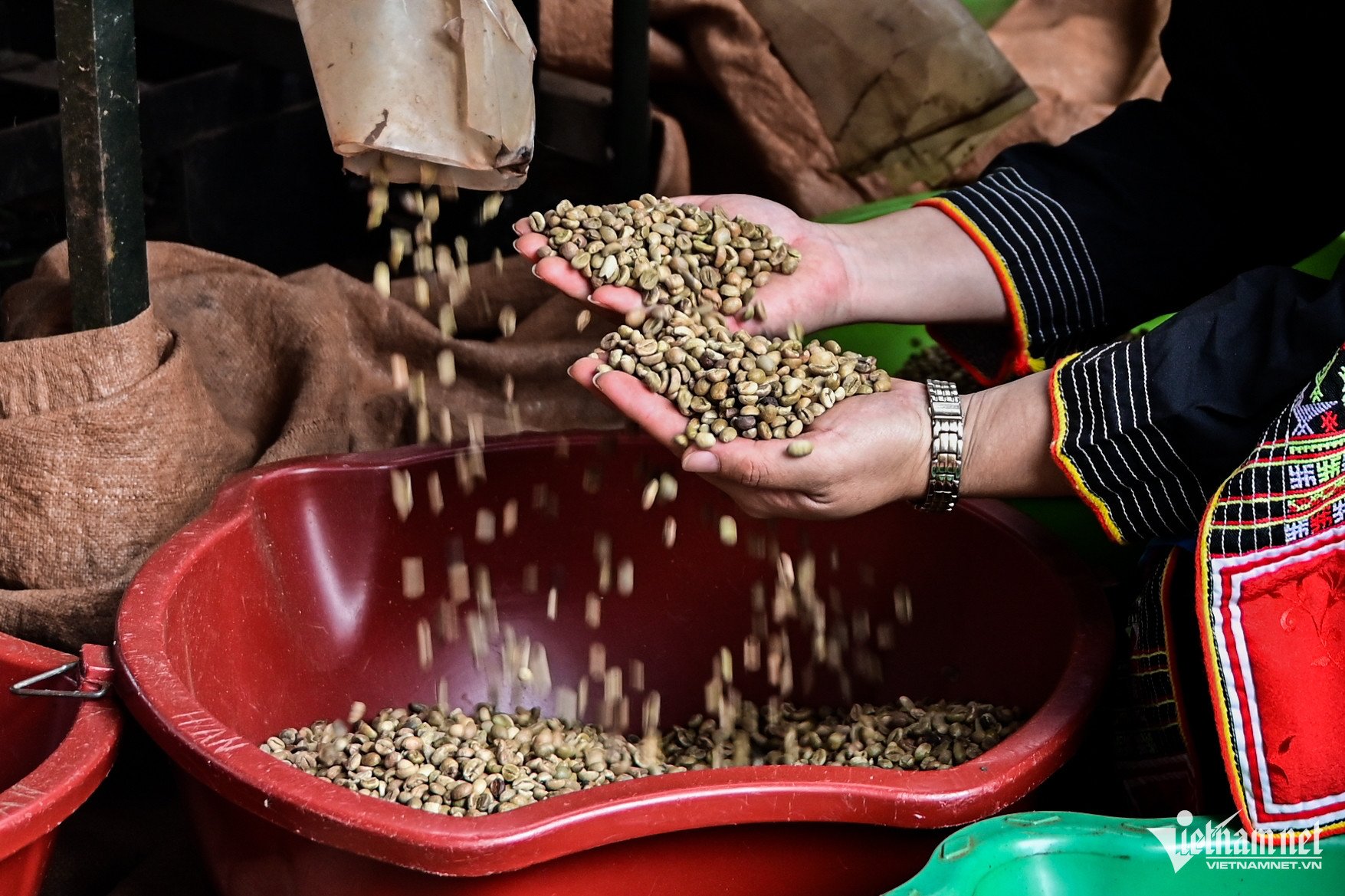
For wholesale buyers
For wholesale customers, the story doesn’t stop at buying a few coffee packages to take home. This is when you need a partner capable of stable supply, consistent quality, and professional OEM services.
1. Local collectors and export agents
These are middlemen who gather beans from farmers and sell them in bulk. Prices can be attractive, but consistency is not always guaranteed. Quality often varies from batch to batch, making it a risky choice for brands that depend on stable flavor.
2. Cooperatives and farmer networks
Some international buyers prefer to work directly with cooperatives in regions like Buon Me Thuot or Cau Dat. This model supports farmers and ensures traceability, but requires building long-term relationships, significant investment, and often higher MOQs (minimum order quantities).
3. Buy directly from green coffee dealers and exporters
This is how many international businesses source supplies. Vietnam exports coffee in large quantities, mainly Robusta from Buon Ma Thuot and Dak Lak. However, buying directly requires quality assessment experience, private roasting systems, and is usually not suitable for small and medium enterprises.
4. Roasting partners with OEM/private label services
Hello 5 Coffee is one of Vietnam’s largest private label & OEM suppliers, with over 12 years of export experience to demanding markets like the US, UK, Germany, Japan, South Korea. From Cau Dat Arabica, Buon Ma Thuot Robusta to unique Culi, Hello 5 Coffee allows customers to customize blends, roast levels, and packaging according to requirements. With production capacity of up to 150 tons per month, along with HACCP, FDA, HALAL, ISO 22000 certifications, Hello 5 Coffee meets all scales from small coffee startups to international brand chains.
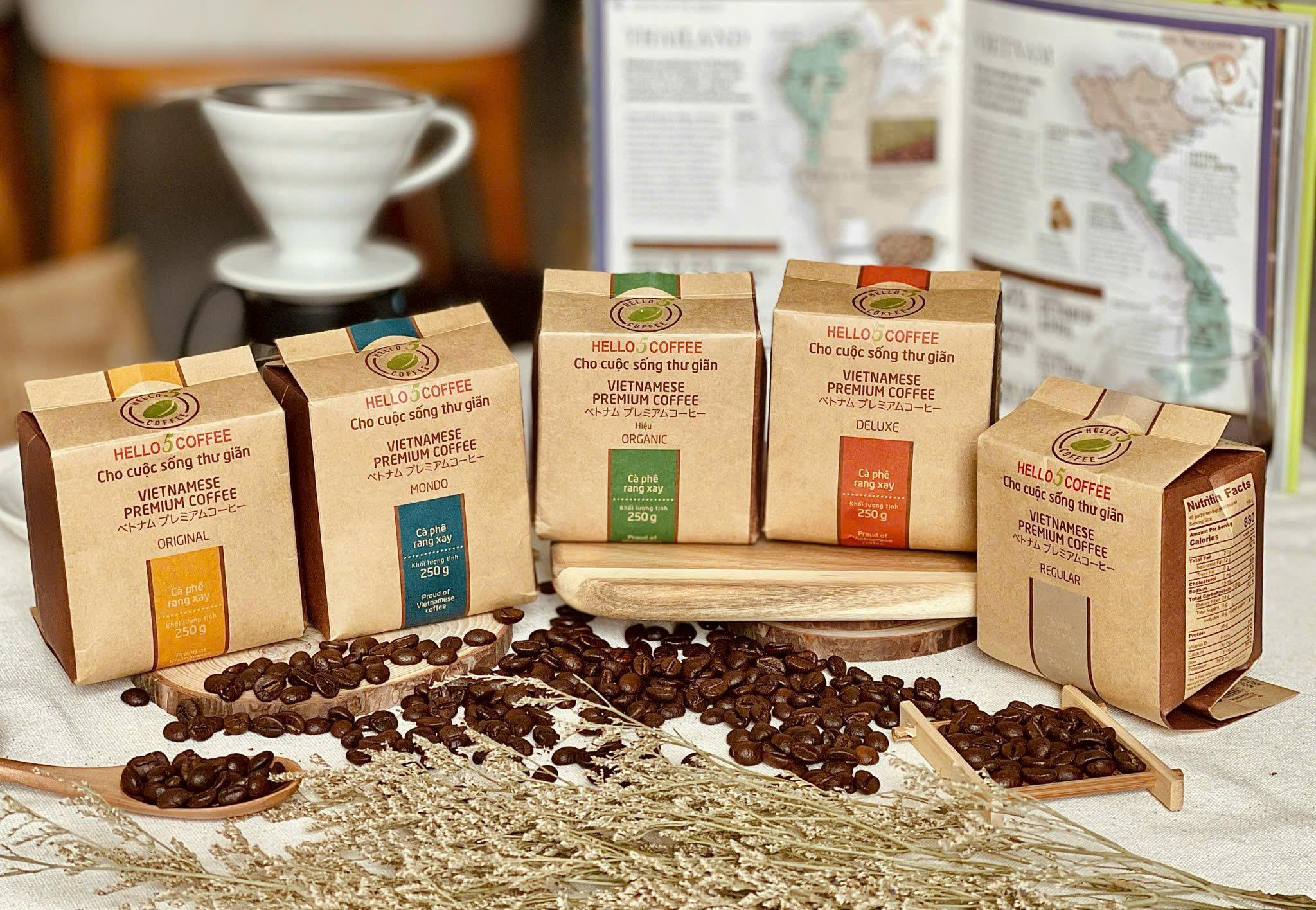
How to identify quality Vietnamese coffee
One of the major challenges when buying coffee in Vietnam is the mixing situation. Many cheap coffees are mixed with corn, soybeans or chemical flavorings to increase weight and aroma.
Pure coffee usually has small beans, uniform brown color, not oily glossy. When brewed, the coffee water is clear, not thick and sticky. Natural aroma, not harsh. Gentle bitterness, lasting sweet aftertaste instead of harsh and acrid.
Choosing reputable brands like Hello 5 Coffee is the safest way. Because we have a closed production process, transparent origin, and absolute commitment not to mix.
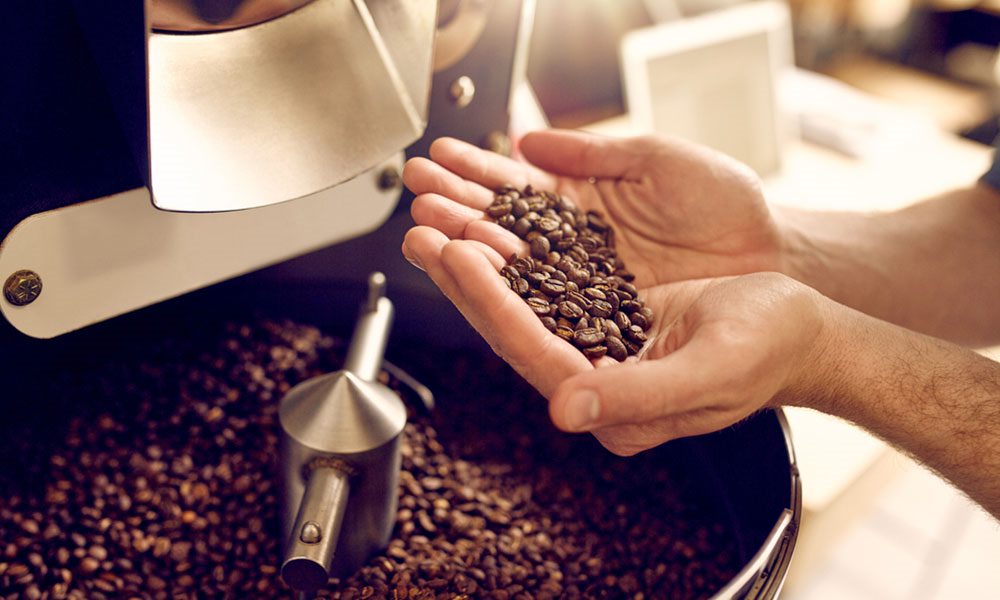
FAQs about buying coffee in Vietnam
1. Is Vietnamese coffee cheap?
Yes. A cup of Vietnamese iced milk coffee usually costs around $1–1.5 USD at local cafés. For beans, Robusta starts at $2.2–2.8 USD/kg, while premium Arabica from Cau Dat is around $4.5–5.5 USD/kg, making Vietnam one of the most affordable coffee origins in the world.
2. Best way to enjoy Vietnamese coffee?
The most popular method is still brewing with phin. A cup of drip coffee, rich and strong, sometimes with condensed milk, is the characteristic flavor of Vietnam. Additionally, you can try egg coffee in Hanoi, salt coffee in Hue, or lightly roasted Arabica espresso at specialty shops.
3. How to keep Vietnamese coffee fresh after buying?
To keep coffee fresh for long, store in one-way valve bags or airtight containers. Avoid direct sunlight and high temperatures. Don’t store in the refrigerator as coffee easily absorbs odors from other foods. It’s best to buy small packages, enough for 2–4 weeks of use.
Read more: 5 ways to store roasted and ground coffee
Thus, this article has answered the question where to buy Vietnamese coffee, providing you with insights into the best bean varieties, famous growing regions, and trusted suppliers. Hopefully, it helps you feel more confident in choosing high-quality Vietnamese coffee, whether for personal enjoyment or business. Wishing you the best in discovering authentic flavors and memorable experiences with Vietnamese coffee.
